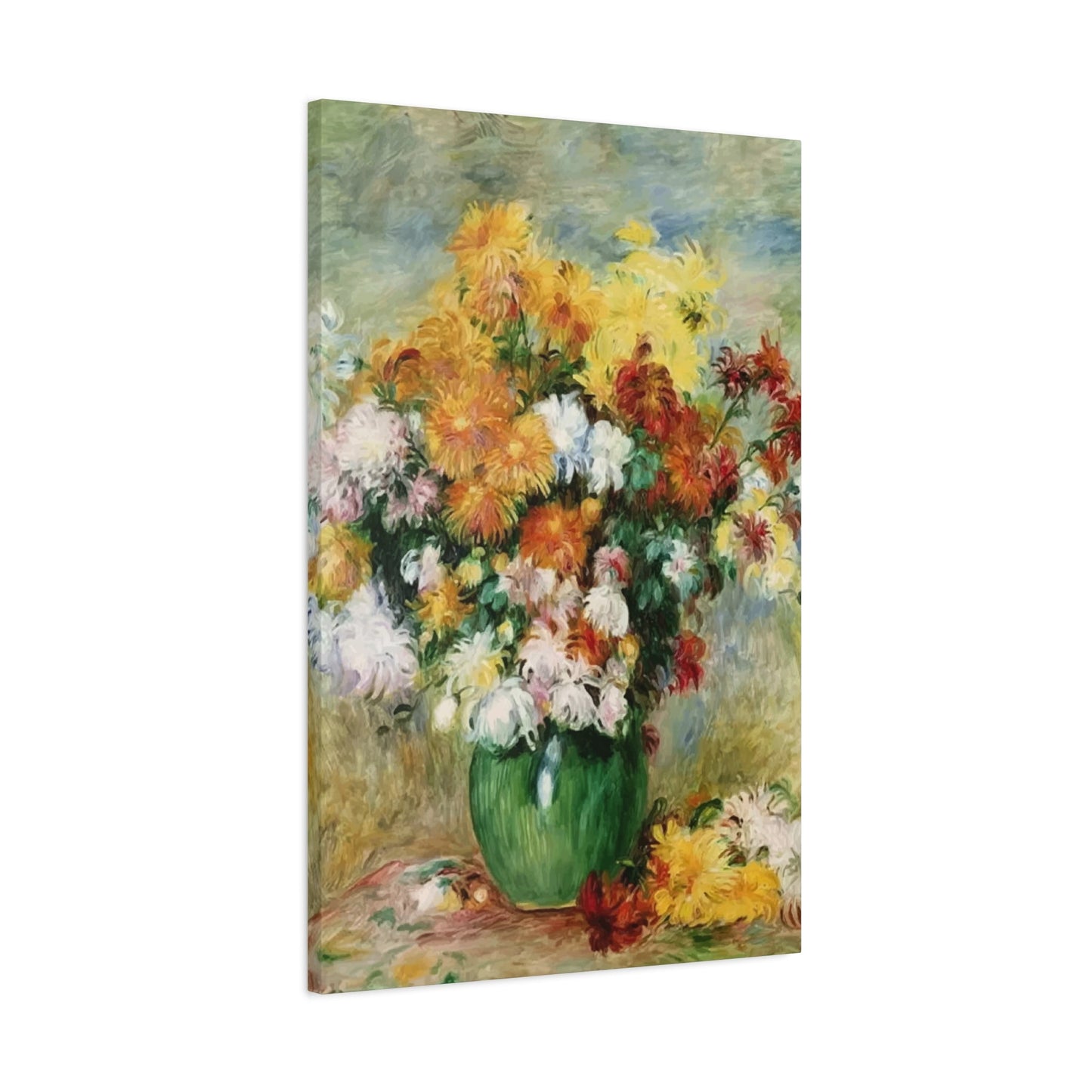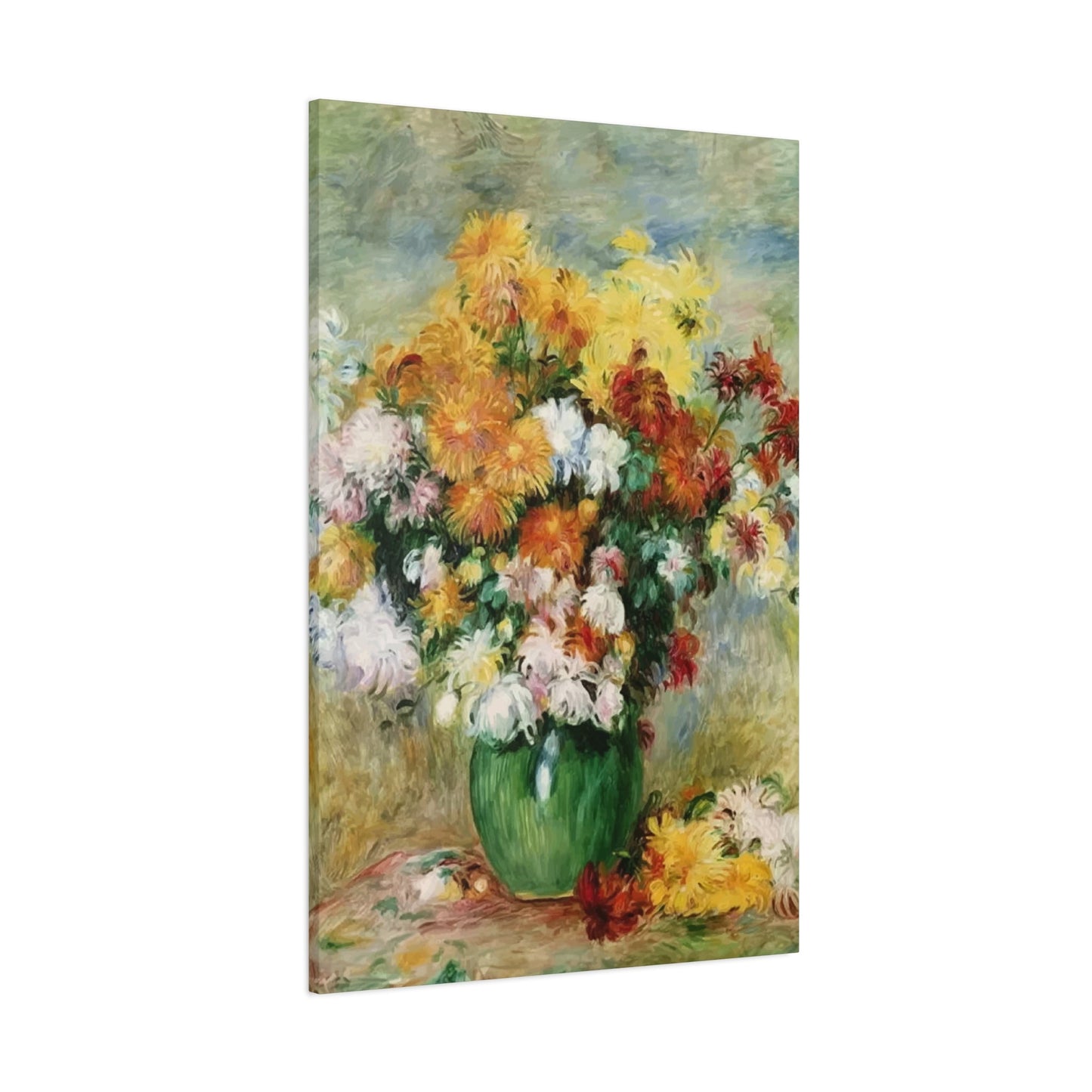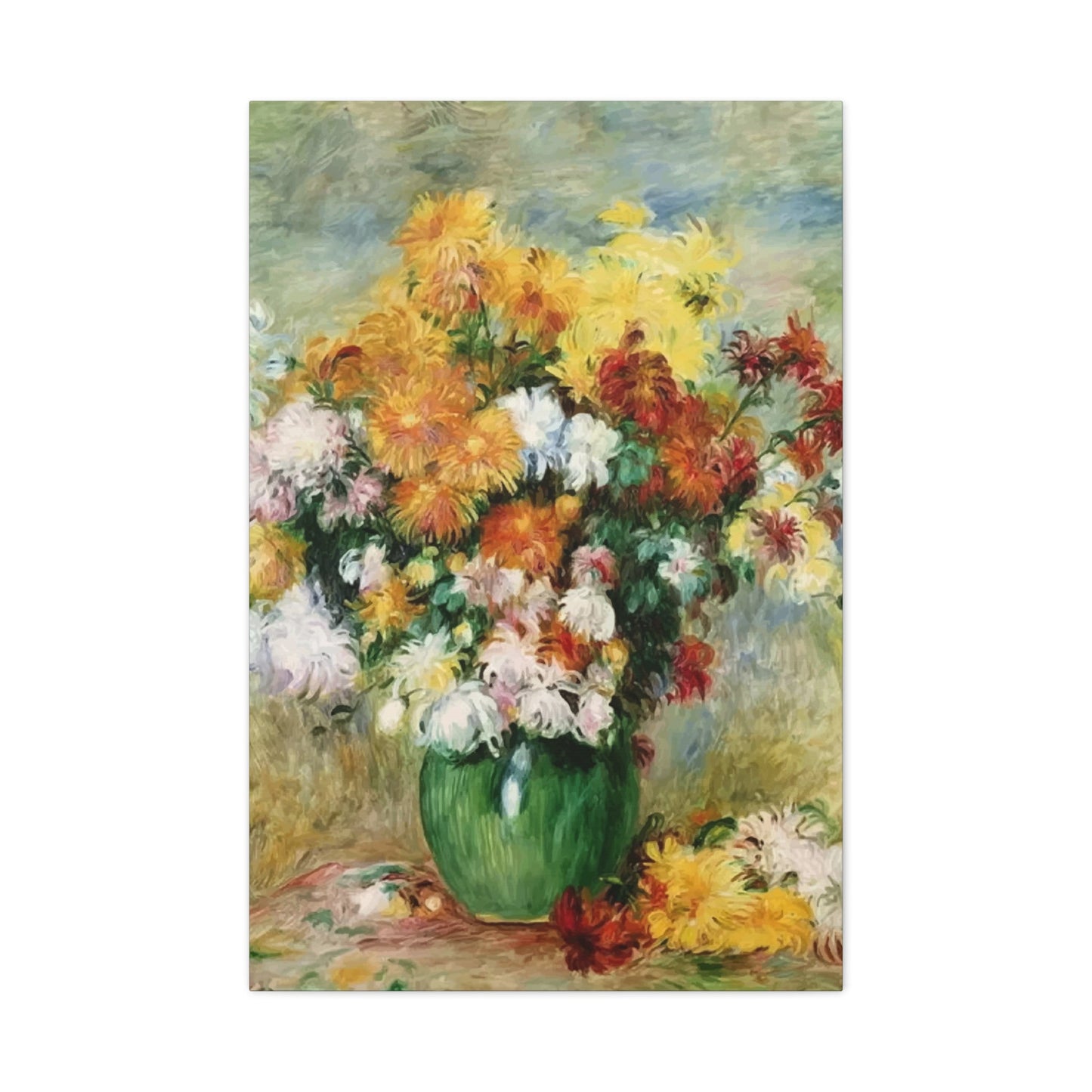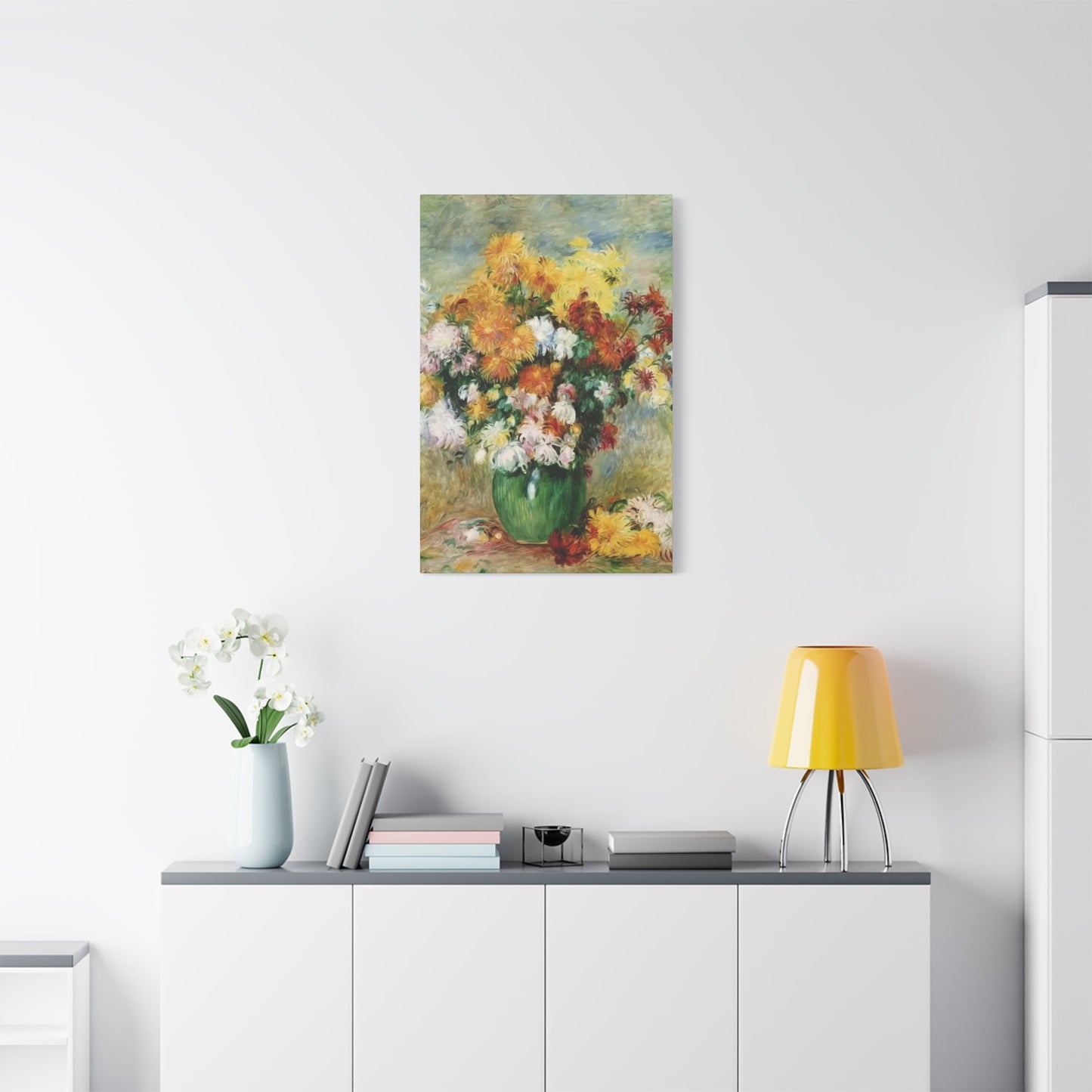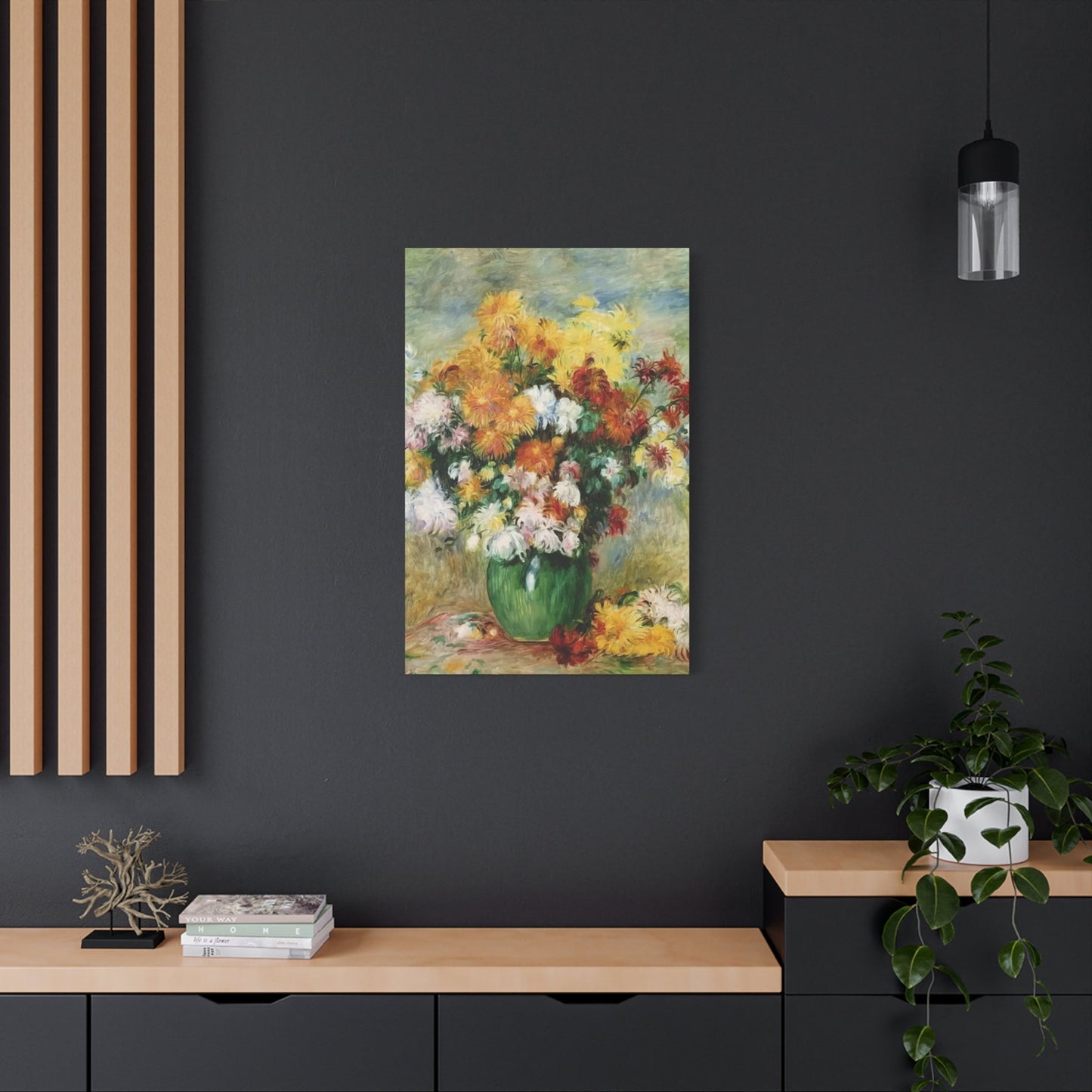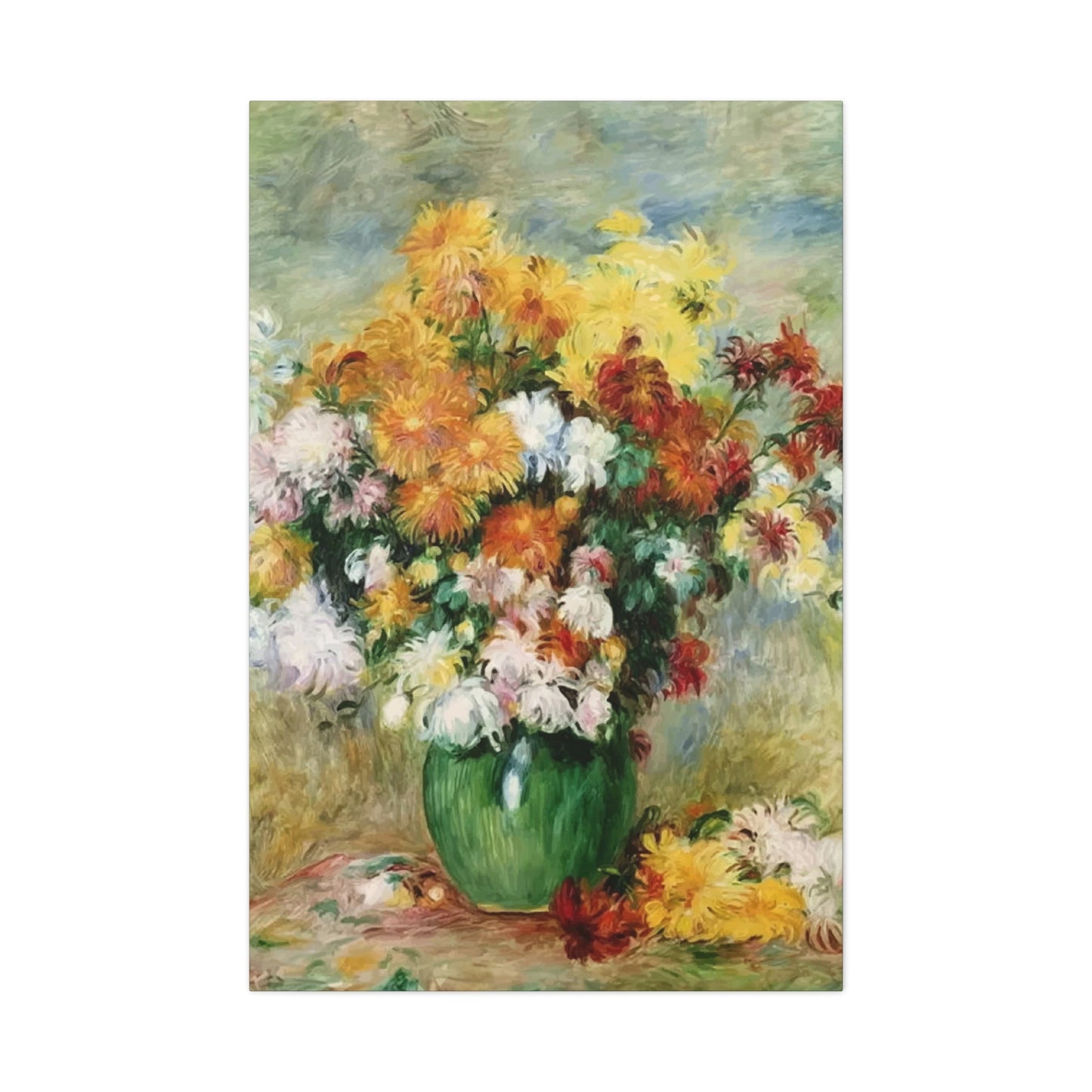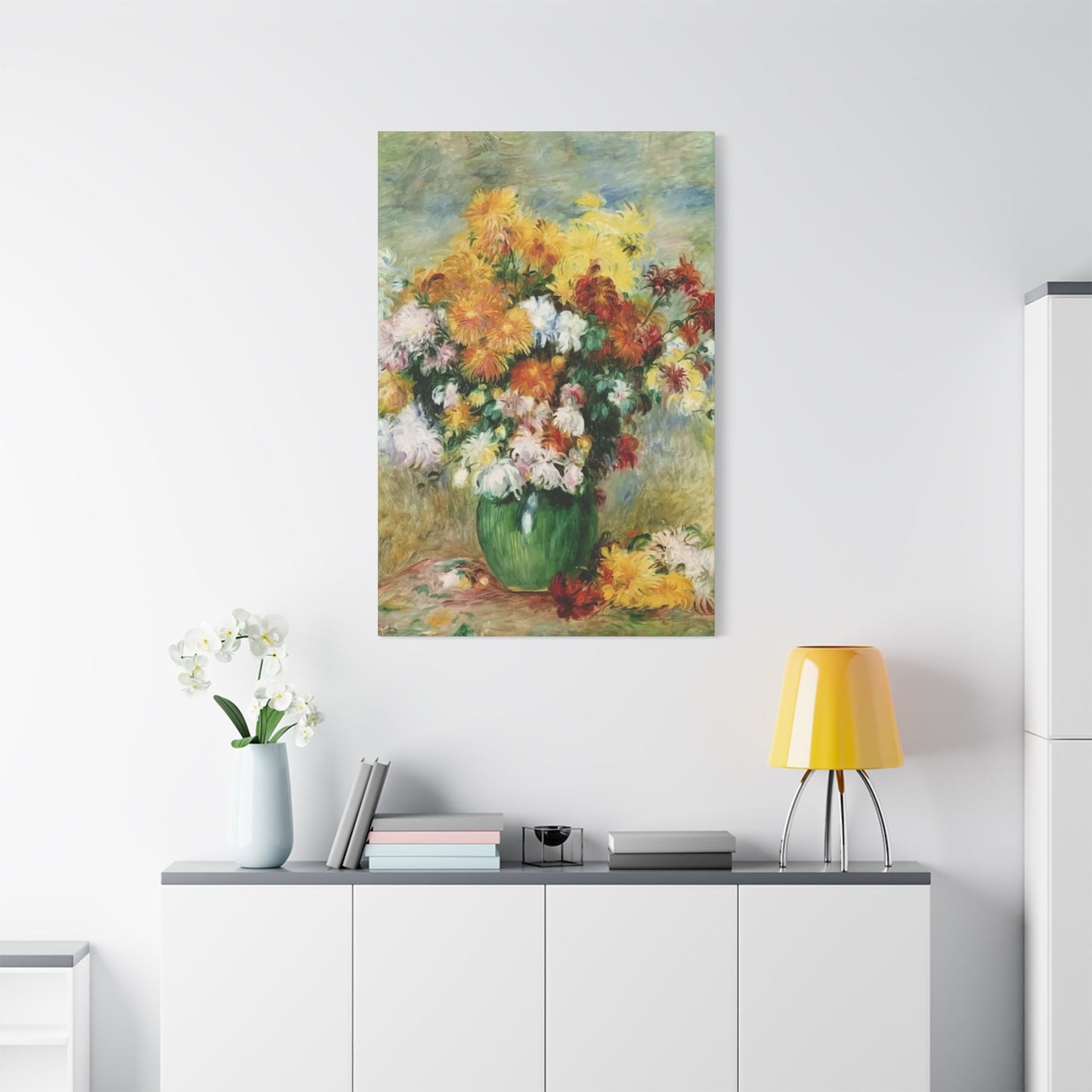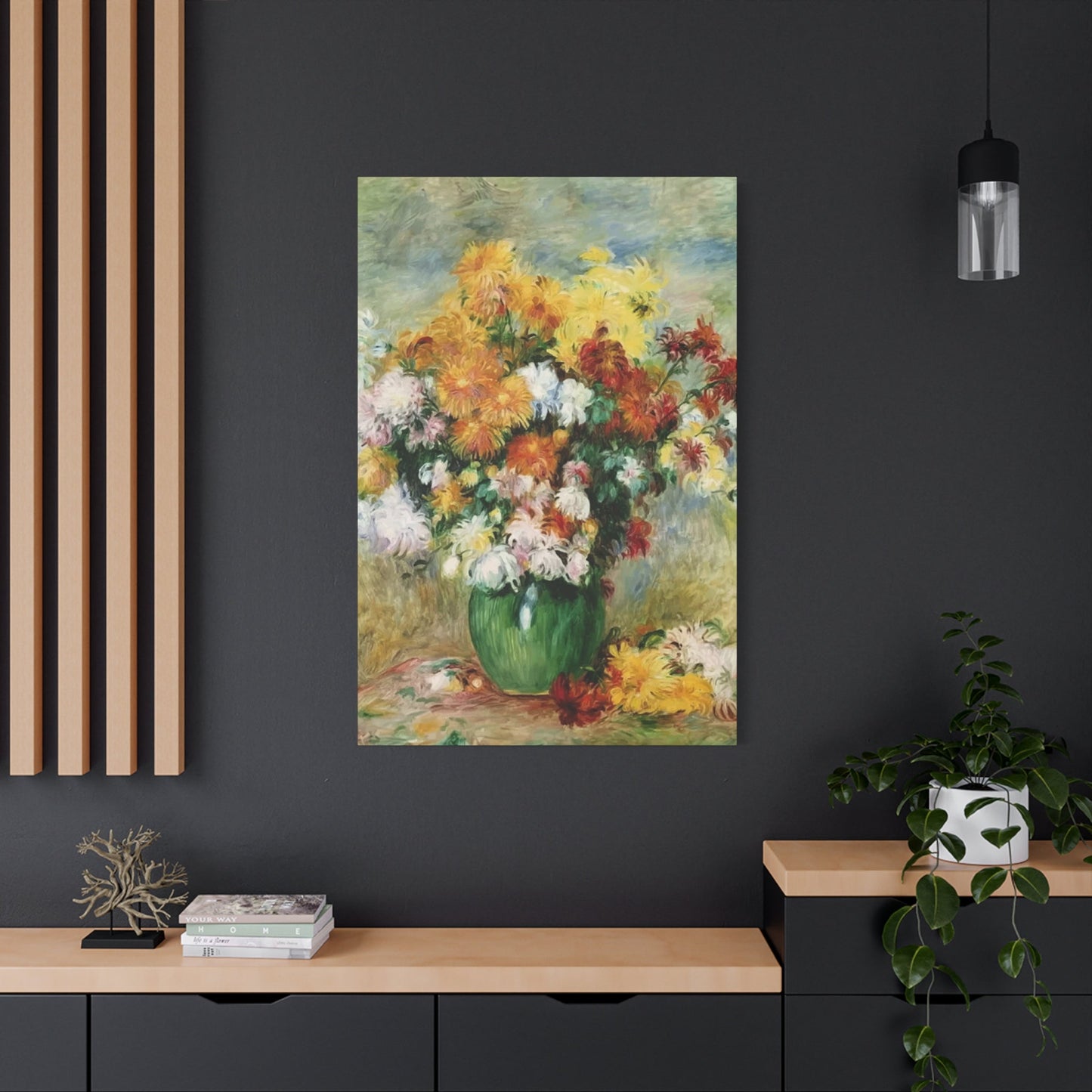DIY Flowers Wall Art: Creative Projects to Make Your Own Floral Decor
Flowers have captivated humanity for centuries with their delicate beauty, vibrant colors, and enchanting fragrances. When it comes to home decoration, floral motifs offer a timeless appeal that transcends seasonal trends and personal preferences. The art of incorporating botanical elements into living environments has evolved from simple pressed flower arrangements to sophisticated artistic expressions that can transform any room into a sanctuary of natural beauty.
The power of floral artwork lies in its ability to evoke emotions, create atmosphere, and establish connections with the natural world. Whether you prefer subtle botanical sketches or bold, contemporary interpretations of garden favorites, floral themes provide endless possibilities for personal expression. From hand-painted masterpieces to digital prints, photography to mixed media installations, the world of flower-themed artwork offers something for every aesthetic preference and budget consideration.
Modern homeowners increasingly seek ways to bring elements of nature into their living environments, particularly as urban living distances us from natural landscapes. Floral artwork serves as a bridge between indoor comfort and outdoor beauty, allowing us to enjoy the visual pleasure of gardens year-round. The psychological benefits of surrounding ourselves with nature-inspired imagery are well-documented, contributing to reduced stress levels, improved mood, and enhanced creativity.
The versatility of floral themes makes them suitable for every room in the home, from intimate bedroom retreats to formal dining areas. Kitchen environments benefit from cheerful sunflower prints or herb garden illustrations, while bathrooms can be transformed with elegant orchid photography or tropical bloom artwork. Living rooms become more inviting with carefully curated gallery arrangements featuring seasonal flowers, and home offices gain inspiration from motivational botanical quotes paired with delicate flower imagery.
Contemporary floral art extends far beyond traditional oil paintings of roses or still-life arrangements. Today's artists experiment with abstract interpretations, geometric flower patterns, minimalist line drawings, and mixed media installations that incorporate real plant materials alongside painted elements. Digital art platforms have democratized floral artwork creation, allowing independent artists to share their unique visions with global audiences seeking distinctive pieces for their homes.
The selection process for floral artwork involves consideration of color schemes, room proportions, lighting conditions, and existing furnishings. Successful integration requires understanding how different flower types convey various moods and messages. Delicate cherry blossoms suggest serenity and renewal, while bold sunflowers communicate energy and optimism. Sophisticated orchids convey elegance and refinement, whereas wildflower meadow scenes promote feelings of freedom and natural abundance.
Floral Art Vibes
Creating the perfect floral atmosphere within your home begins with understanding how different botanical elements influence emotional responses and environmental energy. The concept of floral vibes encompasses more than mere visual appeal; it involves crafting experiences that engage multiple senses and create lasting impressions on inhabitants and guests alike.
Floral vibes can range from romantic and dreamy to energetic and invigorating, depending on color choices, artistic styles, and placement strategies. Soft, muted tones in watercolor techniques create calming atmospheres perfect for bedrooms or meditation areas, while vibrant, saturated colors in contemporary styles energize common areas and workspaces.
The psychological impact of different flower types plays a crucial role in establishing desired vibes. Lavender imagery promotes relaxation and better sleep quality, making it ideal for bedrooms and spa-like bathroom environments. Roses, particularly in pink and red hues, foster romantic atmospheres suitable for master bedrooms or intimate dining areas. Cheerful daisies and sunflowers inject playful energy into children's rooms or breakfast nooks.
Consider the seasonal implications of your floral choices to maintain year-round relevance. Spring flowers like tulips and daffodils work beautifully in entryways and living areas, welcoming guests with promises of renewal and growth. Summer blooms such as peonies and hydrangeas suit family rooms and kitchens where social gathering occurs. Autumn flowers like chrysanthemums and marigolds complement dining rooms and study areas, while winter-blooming plants like amaryllis and poinsettias add warmth to formal rooms.
Layering different floral elements creates depth and visual interest while maintaining cohesive themes. Combine large statement pieces with smaller accent works, mix different artistic mediums, and incorporate three-dimensional elements like sculptural flower forms or preserved botanical specimens. This approach prevents monotony while strengthening the overall floral narrative throughout your living environment.
The lighting in each room significantly affects how floral artwork appears and influences the vibes it creates. Natural light enhances watercolor paintings and photography, revealing subtle color variations and delicate details. Artificial lighting should complement rather than compete with artwork, using warm tones for cozy atmospheres or cool tones for contemporary, gallery-like presentations.
Personal connection to specific flowers enhances the authenticity of your floral vibes. Incorporate flowers with meaningful associations, such as your wedding bouquet varieties, grandmother's garden favorites, or blooms from memorable travels. These personal touches create genuine emotional resonance that goes beyond mere decoration.
Brighten with Flowers
The transformative power of floral imagery to brighten any room extends beyond simple color addition; it involves strategic placement, thoughtful selection, and creative presentation techniques that maximize visual impact and emotional uplift. Brightening with flowers requires understanding how botanical elements interact with existing lighting, color schemes, and architectural features.
Natural light amplifies the brightening effect of floral artwork, but even rooms with limited sunlight can benefit from carefully chosen pieces that reflect and distribute available light. Light-colored flowers against darker backgrounds create dramatic contrast that draws attention and creates focal points. Conversely, dark flowers on light backgrounds provide subtle sophistication while still contributing to overall brightness.
Yellow flowers naturally brighten any environment, evoking sunshine and optimism regardless of weather conditions outside. Sunflower artwork, daffodil photography, and abstract interpretations of golden blooms work particularly well in kitchens, breakfast rooms, and home offices where morning energy is essential. These pieces maintain their brightening effect throughout the day, providing consistent mood enhancement.
White and cream-colored flowers offer versatile brightening options that complement any existing color scheme while adding elegance and sophistication. White roses, magnolia blossoms, and lily arrangements photograph beautifully and reproduce well in various print mediums. These neutral floral choices work exceptionally well in formal dining rooms, master bedrooms, and entryway areas where welcoming brightness is desired without overwhelming existing décor.
Bright pink and coral flowers provide energetic brightness that works particularly well in social areas and children's rooms. Cherry blossom photography, peony paintings, and abstract coral interpretations add warmth and vitality while maintaining feminine elegance. These colors photograph beautifully under various lighting conditions and maintain their brightening effect from morning through evening hours.
Orange flowers bring warmth and energy to any environment, making them excellent choices for exercise rooms, creative studios, and social gathering areas. Marigold artwork, tiger lily photography, and abstract orange bloom interpretations create inviting atmospheres that encourage activity and social interaction. These warm tones complement both traditional and contemporary décor styles.
Multi-colored floral arrangements and wildflower meadow scenes provide brightening effects through color diversity rather than single-hue intensity. These pieces work well in larger rooms where multiple color elements can be appreciated without overwhelming smaller environments. Gallery arrangements of varied floral pieces create custom brightening solutions tailored to specific room requirements.
The placement height of brightening floral artwork significantly impacts its effectiveness. Pieces hung at eye level receive maximum attention and provide optimal brightening impact. Higher placement draws the eye upward, creating illusions of increased ceiling height while maintaining brightening benefits. Lower placement creates intimate viewing experiences suitable for seating areas and reading nooks.
Flower Power Prints
The revolution in printing technology has democratized access to high-quality floral artwork, making it possible for homeowners to enjoy museum-quality botanical prints at affordable prices. Flower power prints encompass everything from vintage botanical illustrations to contemporary digital creations, offering unprecedented variety in styles, sizes, and presentation options.
Digital printing advances now allow for reproduction of intricate details previously visible only in original artwork. Macro photography of flower petals, revealing textural details invisible to naked eyes, can be printed at large scales that create immersive viewing experiences. These technological capabilities enable artists to explore new creative territories while making their work accessible to broader audiences.
Print quality considerations become crucial when selecting flower power prints for long-term enjoyment. Archival inks and acid-free papers ensure color stability and longevity, protecting your investment while maintaining visual impact over years of display. Understanding different paper types helps match prints to intended environments; glossy finishes work well in high-light areas, while matte finishes reduce glare in rooms with multiple light sources.
Size selection for flower power prints requires careful consideration of room proportions and viewing distances. Large format prints create dramatic impact in spacious rooms with high ceilings, while smaller prints work better in intimate settings or grouped arrangements. Medium-sized prints offer versatility for most residential applications, providing sufficient detail appreciation without overwhelming room proportions.
Contemporary flower power prints often incorporate mixed media elements, combining traditional botanical illustrations with modern graphic design elements, typography, or abstract components. These hybrid approaches appeal to homeowners seeking unique pieces that bridge traditional and contemporary aesthetics. Such prints work particularly well in transitional décor schemes that blend classic and modern elements.
Vintage-inspired flower power prints tap into nostalgia while providing timeless appeal that transcends current trends. Reproduction botanical illustrations from historical texts, vintage seed packet designs, and retro advertising artwork featuring flowers create interesting conversation pieces while maintaining broad aesthetic appeal. These prints work excellently in farmhouse-style kitchens, traditional dining rooms, and cottage-inspired bedrooms.
The framing and presentation of flower power prints significantly impacts their overall effect. Simple, clean frames allow artwork to command attention without distraction, while ornate frames add traditional elegance suitable for formal environments. Alternative presentation methods include canvas mounting, acrylic mounting, and metal prints that offer contemporary sophistication.
Grouping strategies for flower power prints create opportunities for storytelling and thematic development. Botanical progression series showing flower development from bud to full bloom create educational and visually interesting displays. Seasonal groupings allow for periodic rotation that keeps environments fresh and seasonally appropriate.
Soft Petal Art
The delicate beauty of soft petal art captures the ephemeral nature of flowers while providing lasting enjoyment through artistic interpretation. This art form emphasizes texture, subtle color gradations, and gentle compositions that create calming, sophisticated environments suitable for various residential applications.
Watercolor techniques naturally lend themselves to soft petal art, allowing colors to blend organically while maintaining the translucent quality characteristic of actual flower petals. These techniques work particularly well for depicting delicate flowers like cherry blossoms, baby's breath, and sweet peas, where subtle color variations and gentle forms are essential to authentic representation.
Pastel media offers another excellent approach to soft petal art, providing the ability to layer colors gradually while maintaining soft, dreamlike qualities. Pastel artworks photograph and reproduce well, making them suitable for print reproduction when original artwork is beyond budget constraints. The texture inherent in pastel techniques adds tactile interest that enhances viewing experiences.
Soft petal art themes work exceptionally well in bedrooms, where calming influences promote better sleep quality and relaxation. Gentle color palettes in blues, lavenders, and soft pinks create serene atmospheres that support rest and rejuvenation. Placement near beds or in direct sightlines from pillows maximizes the calming benefits of soft petal artwork.
Nursery and children's room applications for soft petal art require careful color selection to ensure age-appropriate stimulation levels. Soft yellows, pale greens, and gentle pinks provide visual interest without overstimulation, while maintaining the sophisticated aesthetic that grows with children rather than requiring frequent replacement as tastes mature.
The meditation and wellness applications of soft petal art extend its appeal beyond mere decoration. Gentle flower imagery supports mindfulness practices, yoga sessions, and general stress reduction efforts. Home spa environments particularly benefit from soft petal art that reinforces themes of natural beauty and gentle self-care.
Abstract interpretations of soft petal art allow for personal interpretation while maintaining gentle, calming characteristics. These pieces work well in contemporary settings where literal floral representation might feel too traditional. Abstract soft petal art bridges the gap between nature-inspired themes and modern aesthetic preferences.
Mixed media approaches to soft petal art incorporate real preserved petals, delicate fabrics, and textural elements that enhance the tactile aspects of the artwork. These pieces require careful preservation and placement considerations but offer unique visual and textual experiences unavailable in traditional two-dimensional artwork.
The lighting requirements for soft petal art differ from bold, vibrant pieces. Gentle, diffused lighting enhances subtle color variations and delicate details without washing out the gentle qualities that make this art form special. Avoiding direct sunlight prevents fading while maintaining the soft, ethereal qualities essential to effective soft petal art presentation.
Bold Flower Statements
Creating dramatic impact through bold flower statements requires confidence in color selection, scale consideration, and placement strategies that command attention while maintaining overall room harmony. Bold floral artwork serves as room anchors, establishing focal points around which other decorative elements can be arranged.
Large-scale floral photography offers one approach to bold flower statements, with macro images of single blooms printed at substantial sizes creating immersive viewing experiences. These pieces work particularly well in contemporary settings with clean lines and minimal competing elements. The detail visible in large-scale floral photography often reveals unexpected beauty in familiar flowers.
Vibrant color choices distinguish bold flower statements from more subtle approaches. Saturated reds, electric blues, and brilliant oranges create energy and excitement while demonstrating confidence in design choices. These bold colors work best in rooms with adequate natural light and neutral background elements that allow the artwork to dominate without creating visual chaos.
Contemporary artistic interpretations of flowers often employ bold techniques like pop art styling, graphic simplification, or unusual color combinations that challenge traditional flower representation. These approaches appeal to homeowners seeking unique, conversation-worthy pieces that reflect personal creativity and artistic appreciation.
The placement of bold flower statements requires careful consideration of room traffic patterns and viewing angles. These pieces should be positioned where they can be appreciated fully without overwhelming intimate conversation areas or competing with functional room requirements. Strategic placement near room entrances creates immediate impact for visitors.
Balancing bold flower statements with other room elements prevents overwhelming while maintaining dramatic impact. Neutral furniture and subdued accessory colors allow bold floral artwork to command attention without creating visual competition. This approach ensures that bold statements enhance rather than dominate room aesthetics.
Multiple bold flower statements within single rooms require careful coordination to prevent visual conflict. Varying the flower types, artistic styles, or color palettes while maintaining overall cohesion creates sophisticated gallery-like presentations. Professional design consultation may be beneficial when planning multiple bold pieces within single environments.
The investment in bold flower statements often justifies higher-quality materials and professional framing due to their prominent role in room design. Quality printing, archival materials, and expert framing ensure that these important pieces maintain their impact and value over time. Consider bold flower statements as long-term investments in home aesthetics.
Seasonal considerations for bold flower statements include their year-round appropriateness and potential for periodic rotation. While some bold pieces work well throughout the year, others may benefit from seasonal display schedules that keep environments fresh and seasonally relevant without requiring permanent commitment to specific pieces.
Pastel Flower Decor
The gentle sophistication of pastel flower decor creates environments that feel both current and timeless, offering visual interest without overwhelming existing design elements. Pastel palettes work harmoniously with various decorative styles, from shabby chic to contemporary minimalist, making them versatile choices for different home aesthetics.
Pastel pink flowers, including roses, peonies, and cherry blossoms, provide romantic elegance suitable for bedrooms, powder rooms, and formal living areas. These soft hues complement both warm and cool color schemes while maintaining feminine appeal that appeals to various age groups. The versatility of pink pastels allows for easy integration with existing color palettes.
Soft lavender and purple flower imagery offers calming influences ideal for bedrooms, bathrooms, and meditation areas. These colors promote relaxation while maintaining visual interest, making them excellent choices for environments where peace and tranquility are priorities. Lavender flower art particularly appeals to those seeking natural wellness themes.
Pale yellow and cream flower artwork brings gentle warmth to any environment without the intensity of bright yellow alternatives. These subtle warm tones work excellently in kitchens, breakfast areas, and home offices where gentle energy support is desired. Cream and pale yellow flowers photograph beautifully and reproduce well in various print mediums.
Mint green and sage flower imagery provides fresh, natural feelings that work well in kitchens, bathrooms, and sunrooms. These colors connect to nature themes while maintaining contemporary appeal. Green pastel flowers often incorporate foliage elements that add textural interest and natural authenticity.
Baby blue and powder blue flower art creates calming, sky-like atmospheres suitable for bedrooms, nurseries, and reading areas. These colors work particularly well in rooms with limited natural light, as they reflect available light while maintaining color integrity. Blue pastel flowers often feature in wildflower meadow scenes and cottage garden themes.
Combining multiple pastel colors within single pieces or grouped arrangements creates sophisticated color stories that evolve throughout viewing. These combinations require careful balance to maintain harmony while providing visual interest. Professional color consultation can be valuable when planning complex pastel arrangements.
The seasonal versatility of pastel flower decor makes it suitable for year-round display without feeling dated or seasonally inappropriate. Spring associations naturally complement pastel colors, but these gentle hues work well in all seasons when paired with appropriate supporting elements and seasonal accessories.
Texture considerations in pastel flower decor include the interplay between soft colors and various artistic techniques. Watercolor pastels create flowing, organic feelings, while oil pastel techniques add texture and depth. Photography of pastel flowers can be enhanced through soft focus techniques that emphasize color over sharp detail.
Floral Minimalism
The principles of minimalist design find beautiful expression in floral art that emphasizes simplicity, clean lines, and thoughtful editing to create maximum impact through minimal elements. Floral minimalism appeals to contemporary homeowners seeking nature-inspired themes without busy or overwhelming presentations.
Single flower studies exemplify floral minimalism principles, focusing attention on individual blooms while eliminating distracting background elements. These pieces work exceptionally well in modern environments with clean lines and uncluttered surfaces. The simplicity of single flower studies allows for appreciation of natural form, color, and texture.
Line drawing interpretations of flowers reduce botanical forms to essential elements, creating sophisticated artwork that bridges nature themes and contemporary aesthetic preferences. These minimal interpretations work well in black and white or with single accent colors that maintain simplicity while adding visual interest.
Negative space utilization in floral minimalism creates compositions where empty areas become as important as flower imagery. These approaches create breathing room that allows individual elements to command attention while maintaining overall composition balance. Negative space techniques work particularly well in smaller rooms where busy artwork might feel overwhelming.
Color limitations in floral minimalism often involve monochromatic palettes or limited color ranges that create cohesion while maintaining visual interest. Black and white flower photography offers timeless appeal that complements any existing color scheme, while single-color approaches like all-white or all-green flower studies create sophisticated, gallery-like presentations.
Geometric interpretations of floral forms align minimalist principles with botanical themes, creating artwork that appeals to contemporary tastes while maintaining nature connections. These pieces often employ simplified flower shapes, geometric arrangements, or mathematical patterns found in natural flower formations.
The placement of floral minimalism requires careful consideration of surrounding elements to maintain the simplicity that makes this approach effective. Clean, uncluttered surroundings allow minimal floral art to command appropriate attention without competing with busy environments or excessive decorative elements.
Scale considerations in floral minimalism often favor larger pieces that can command attention through presence rather than detail. A single, large minimal flower study can create more impact than multiple smaller pieces, aligning with minimalist principles that favor quality over quantity.
Framing approaches for floral minimalism should complement rather than compete with artwork simplicity. Clean, simple frames or frameless mounting techniques maintain aesthetic coherence while providing necessary support and protection. The framing itself becomes part of the minimalist presentation.
Fresh Flower Prints
The appeal of fresh flower prints lies in their ability to capture the vitality and immediate beauty of recently bloomed flowers, bringing seasonal energy and natural vibrancy into home environments regardless of outdoor conditions or geographic limitations. These prints celebrate the peak moment of floral beauty through various artistic interpretations and printing techniques.
High-resolution photography of fresh flowers allows for detailed reproduction that captures dewdrops, petal textures, and color subtleties often missed in casual observation. These detailed prints work excellently in spaces where close viewing is possible, such as dining areas, reading nooks, or bedroom seating areas where intimate appreciation enhances the viewing experience.
Seasonal rotation of fresh flower prints keeps home environments connected to natural cycles while providing opportunities for regular design updates. Spring prints featuring tulips and daffodils can transition to summer roses and hydrangeas, followed by autumn chrysanthemums and winter amaryllis. This rotation maintains year-round freshness and seasonal relevance.
Garden-to-print processes involve photographing flowers in peak condition, often during optimal lighting conditions that enhance natural beauty. Professional photographers specializing in botanical subjects understand timing, lighting, and composition techniques that maximize the fresh appearance of printed flowers. These specialized skills result in superior print quality.
Color fidelity in fresh flower prints requires attention to printing processes, paper selection, and display conditions. Professional printing services using archival inks and calibrated equipment ensure that printed colors accurately represent the original flower colors. Proper display lighting maintains color integrity while preventing premature fading.
The psychological benefits of fresh flower prints include mood enhancement, stress reduction, and connection to natural cycles that support mental well-being. Research indicates that viewing nature imagery, including fresh flower prints, can reduce cortisol levels and promote relaxation responses similar to those experienced in natural environments.
Artistic interpretations of fresh flowers range from photorealistic reproduction to impressionistic interpretations that capture the essence and energy of fresh blooms while allowing for creative expression. These varied approaches accommodate different aesthetic preferences while maintaining the fresh, vital quality that makes these prints appealing.
The versatility of fresh flower prints accommodates various room types and functions. Kitchen environments benefit from herb flower prints that connect cooking activities to garden themes. Bathroom fresh flower prints create spa-like atmospheres that promote relaxation and self-care. Bedroom fresh flower prints provide gentle, natural awakening experiences.
Preservation techniques for maintaining fresh appearance in prints include UV-resistant coating, proper storage between seasonal rotations, and controlled display environments that minimize exposure to excessive heat, humidity, or direct sunlight. These precautions ensure long-term enjoyment of fresh flower print investments.
Colorful Blooms
The celebration of nature's diverse color palette through colorful bloom artwork creates environments filled with energy, joy, and visual excitement. These pieces showcase flowers at their most vibrant, creating focal points that energize rooms while demonstrating the incredible diversity of natural color combinations.
Rainbow garden themes incorporate multiple flower varieties in comprehensive color spectrums, creating artwork that works with virtually any existing color scheme while adding vibrancy and life. These diverse presentations work particularly well in family rooms, kitchens, and children's areas where energy and cheerfulness are appreciated.
Tropical flower colors, including bird-of-paradise oranges, hibiscus reds, and bougainvillea magentas, bring exotic energy to home environments regardless of geographic location. These intense, saturated colors work well in contemporary settings with neutral backgrounds that allow the vibrant colors to dominate visual attention.
Wildflower meadow colors capture the natural randomness and diversity found in uncultivated flower communities. These presentations often include unexpected color combinations that work harmoniously in nature and translate beautifully to artwork. Wildflower themes work particularly well in casual, country-inspired décor schemes.
Color psychology applications in colorful bloom artwork allow for strategic placement that supports room functions and desired atmospheric qualities. Red flowers energize social areas and dining rooms, while blue flowers calm bedrooms and study areas. Multi-colored pieces provide balanced energy suitable for flexible-use spaces.
Seasonal color progression in bloom artwork can be planned to complement natural outdoor changes, with spring pastels transitioning to summer brights, autumn golds, and winter whites. This progression keeps home environments connected to natural cycles while providing visual interest throughout the year.
The reproduction challenges of colorful blooms require attention to printing technologies and display conditions that maintain color integrity. Advanced printing techniques using expanded color gamuts ensure accurate reproduction of the most vibrant natural colors. Proper lighting enhances rather than diminishes the colorful impact.
Artistic techniques for enhancing natural colors include saturation adjustment, color contrast enhancement, and selective color emphasis that draws attention to particularly beautiful color combinations. These techniques should enhance rather than distort natural beauty, maintaining authenticity while maximizing visual impact.
The longevity of colorful bloom artwork depends on quality materials and proper display conditions. Archival inks and UV-resistant coatings protect vibrant colors from fading, while controlled lighting and temperature conditions maintain color integrity over years of enjoyment. Investment in quality ensures lasting vibrancy.
Flower Art Magic
The transformative power of flower art extends beyond mere decoration to create magical atmospheres that transport viewers to gardens, meadows, and natural wonderlands. This magical quality emerges from the combination of natural beauty, artistic interpretation, and emotional response that flowers naturally evoke in human consciousness.
Enchanted garden themes in flower art create fantasy atmospheres reminiscent of fairy tales and magical stories. These pieces often incorporate elements like morning mist, golden light, and mysterious garden paths that invite viewers into imaginary natural worlds. Such magical interpretations work beautifully in reading areas, children's rooms, and creative studios.
The play of light and shadow in flower art photography can create magical moments that capture fleeting natural phenomena like sunrise backlighting, dewdrop reflections, or late afternoon golden hour illumination. These atmospheric qualities transform ordinary flowers into extraordinary artistic subjects that maintain viewer interest through repeated viewing.
Macro photography reveals the magical microscopic world of flower details usually invisible to casual observation. Extreme close-ups of petal textures, stamen structures, and color gradients create abstract compositions that blur the line between realistic representation and artistic interpretation. These magical details work well in contemporary settings where abstract art is appreciated.
Seasonal magic in flower art captures the special qualities of flowers during peak blooming periods when natural conditions create optimal beauty. Spring magic includes the emergence of first blooms after winter dormancy. Summer magic celebrates abundance and full bloom glory. Autumn magic captures the last precious blooms before winter rest.
Mystical interpretations of flowers draw upon cultural symbolism and spiritual associations that different flowers carry across various traditions. Lotus flowers represent enlightenment and rebirth. Roses symbolize love and passion. Sunflowers embody loyalty and devotion. These symbolic layers add depth and meaning to flower art beyond mere aesthetic appreciation.
The emotional magic of flower art lies in its ability to evoke memories, dreams, and aspirations connected to natural experiences. Grandmother's garden roses, first date flowers, or wedding bouquet varieties carry personal magic that enhances artwork's emotional impact. Personal connections create lasting relationships with flower art that transcend mere decoration.
Digital art techniques enable magical interpretations impossible in traditional media, including color manipulation, surreal combinations, and fantasy environments that push creative boundaries while maintaining flower themes. These contemporary approaches appeal to homeowners seeking unique, conversation-worthy pieces.
The presentation magic involves lighting, framing, and placement techniques that enhance the magical qualities inherent in flower art. Subtle accent lighting can create dramatic shadows and highlights that change throughout the day. Strategic placement in unexpected locations surprises viewers and maintains the sense of discovery essential to magical experiences.
Simple Floral Decor
Simplicity in floral decoration achieves elegance through restraint, careful selection, and attention to quality over quantity. Simple floral approaches work exceptionally well in contemporary homes where clean lines and uncluttered aesthetics are valued, while still providing the natural beauty and emotional benefits of flower imagery.
Single stem studies represent the essence of simple floral decor, focusing attention on individual flower beauty without competing elements or busy compositions. These minimal approaches work well in modern settings where each decorative element needs to justify its presence through beauty and function rather than mere space filling.
Monochromatic flower arrangements in artwork create sophisticated presentations that complement existing color schemes while maintaining visual interest through texture, form, and tonal variation. Black and white flower photography offers timeless appeal that works with any décor style, while single-color studies in blues, greens, or warm tones provide subtle color enhancement.
The editing process in simple floral decor involves removing unnecessary elements rather than adding complexity. This reductive approach requires skill in identifying essential components that maintain flower beauty while eliminating distractions. Professional artists specializing in simple floral work understand this balance between minimal presentation and maximum impact.
Clean backgrounds in simple floral artwork allow flower subjects to command full attention without competing with busy or colorful backgrounds. White, neutral, or softly blurred backgrounds create gallery-quality presentations suitable for contemporary homes where sophisticated simplicity is appreciated.
Quality considerations become crucial in simple floral decor because each element receives more scrutiny when not hidden within busy compositions. Superior printing, professional mounting, and expert framing become essential investments that ensure simple pieces meet the high standards their prominence demands.
The versatility of simple floral decor accommodates various room sizes and functions without overwhelming smaller areas or feeling lost in larger rooms. Single pieces can anchor seating areas, while grouped arrangements of simple pieces create larger displays suitable for wall galleries or hallway presentations.
Seasonal adaptation of simple floral decor can involve rotating between different simple pieces rather than complex seasonal arrangements. This approach maintains the simple aesthetic while providing variety and seasonal connection. Storage and rotation systems become important considerations for maintaining simple pieces in optimal condition.
The timeless appeal of simple floral decor makes it suitable for long-term investment and enjoyment. Simple, quality pieces avoid trendy elements that may feel dated in future years, instead focusing on fundamental natural beauty that transcends temporary style preferences.
Spring Flowers Indoors
Bringing the renewal and optimism of spring indoors through floral artwork creates environments that celebrate new beginnings, fresh starts, and natural awakening after winter dormancy. Spring flower themes work particularly well during transitional seasons when outdoor conditions may not yet support fresh flowers but the desire for spring energy is strong.
Early spring flowers like snowdrops, crocuses, and daffodils represent resilience and hope as they emerge through snow and frozen ground. Artwork featuring these hardy pioneers creates inspirational messages about persistence and renewal that resonate throughout the year, not just during spring months.
Cherry blossom artwork captures the brief but spectacular beauty of spring's most celebrated flowering trees. These delicate pink and white blooms photograph beautifully and translate well to various artistic mediums. Cherry blossom themes work particularly well in bedrooms, meditation areas, and entryways where welcome messages are appreciated.
Tulip diversity offers incredible variety in spring flower themes, from simple single varieties to complex parrot tulips with ruffled petals and unusual color combinations. Dutch tulip photography and botanical illustrations provide sophisticated artwork options that celebrate spring while maintaining year-round relevance.
The color psychology of spring flowers emphasizes renewal, growth, and optimism through fresh greens, cheerful yellows, and soft pastels that complement the increasing daylight hours of spring season. These colors work well in rooms where morning activities occur, supporting natural circadian rhythm alignment.
Garden emergence themes capture the magical process of spring awakening as flowers push through soil, unfurl leaves, and prepare for blooming. Time-lapse photography and artistic interpretations of growth processes create dynamic artwork that suggests movement and development.
Spring rain and flower combinations create romantic, atmospheric artwork that celebrates the essential role of spring precipitation in flower development. Rain-kissed petals, dewdrops, and moisture-laden garden scenes provide textural interest and natural authenticity.
The fragrance associations of spring flowers can be suggested through artistic techniques that evoke sensory memories even in visual artwork. Soft pastels and flowing compositions remind viewers of the gentle fragrances associated with spring gardens, enhancing the multi-sensory appeal of flower art.
Indoor spring gardens become possible through artwork that creates the illusion of garden viewing from interior environments. Large-scale spring garden photography or painted garden scenes can transform windowless rooms into garden-adjacent areas that provide psychological benefits of garden connectivity.
Abstract Flowers
Abstract interpretation of floral forms opens creative possibilities that bridge nature appreciation and contemporary artistic expression. These pieces appeal to homeowners seeking nature connections without literal representation, allowing for personal interpretation while maintaining botanical inspiration.
Geometric flower abstractions reduce natural forms to essential shapes and patterns, creating artwork that works well in contemporary settings with clean lines and modern furnishings. These pieces often emphasize the mathematical principles underlying flower construction, including spiral patterns, symmetrical arrangements, and proportional relationships.
Color field approaches to abstract flowers focus on emotional color responses rather than realistic representation. Bold color combinations inspired by flower gardens create energetic artwork suitable for social areas, while subtle color gradients evoke gentle garden atmospheres appropriate for quiet contemplation areas.
Textural abstractions emphasize the tactile qualities of flowers through artistic techniques that suggest petal softness, leaf roughness, or bark texture without literal representation. These pieces work particularly well in environments where tactile elements are appreciated, such as reading areas or meditation rooms.
Movement interpretation in abstract flower art captures the dynamic qualities of flowers responding to wind, rain, or seasonal changes. Flowing lines, dynamic compositions, and energetic brushstrokes convey natural movement that adds vitality to interior environments.
Mixed media abstract flowers incorporate non-traditional materials alongside traditional artistic mediums, creating unique pieces that engage multiple senses and provide conversation topics. These experimental approaches appeal to collectors seeking distinctive artwork that reflects contemporary artistic innovation.
The emotional interpretation of abstract flowers allows viewers to project personal experiences and associations onto artwork, creating individual relationships that enhance long-term appreciation. This subjective quality makes abstract flower art particularly suitable for personal retreat areas where individual interpretation is valued.
Scale flexibility in abstract flower art accommodates various display requirements from intimate small pieces suitable for powder rooms to large installations appropriate for two-story entryways. The non-literal nature of abstract flowers allows for dramatic scale changes without losing essential character.
Contemporary relevance of abstract flower art ensures compatibility with current design trends while maintaining timeless appeal through natural inspiration. These pieces bridge traditional flower appreciation and contemporary artistic sensibilities, making them suitable for transitional décor schemes.
Nature on Walls
The concept of bringing nature indoors through artistic representation addresses fundamental human needs for natural connection, particularly important in urban environments where direct nature contact may be limited. Nature-themed artwork, specifically floral imagery, provides psychological benefits while enhancing aesthetic appeal of interior environments.
Biophilic design principles support the integration of nature imagery as essential components of healthy indoor environments. Research demonstrates that nature views, even through artwork, can reduce stress hormones, lower blood pressure, and improve cognitive function. Floral artwork serves these wellness functions while providing beauty and visual interest.
Seasonal nature cycles represented through rotating flower displays keep indoor environments connected to outdoor rhythms that support natural circadian patterns and seasonal awareness. This connection becomes particularly valuable in climates with extreme seasons where outdoor nature appreciation may be limited during certain months.
Ecosystem representation through diverse flower artwork educates viewers about botanical diversity while creating visually interesting displays. Prairie wildflower prints, mountain meadow photography, and forest floor flower studies introduce viewers to natural communities they might not otherwise encounter.
Conservation messaging through nature artwork can promote environmental awareness while providing beautiful decoration. Artwork featuring endangered wildflowers or threatened ecosystems combines aesthetic appeal with educational value, supporting both personal enjoyment and broader environmental consciousness.
The scale translation from outdoor nature to indoor artwork requires artistic skill in capturing the essence and impact of natural scenes within residential proportions. Large-format nature photography can create immersive experiences that suggest actual outdoor presence, while smaller pieces provide intimate nature connections suitable for personal viewing.
Regional nature representation allows homeowners to maintain connections to specific geographic areas through artwork featuring local flora. These regional connections provide grounding and sense of place that enhance personal relationship with home environments.
Urban nature themes acknowledge that many homeowners live in cities where wild nature access is limited. Artwork featuring urban gardens, park flowers, or balcony container gardens creates relevant nature connections that reflect actual living situations while maintaining aspirational natural beauty.
The therapeutic applications of nature artwork in home environments support mental health and stress management through regular exposure to calming natural imagery. Healthcare facilities have long recognized these benefits, and residential applications provide similar wellness support for daily living.
Conclusion
DIY flowers wall art is a rewarding and creative way to bring personalized floral beauty into your home. Unlike mass-produced prints or store-bought decorations, handmade floral decor allows you to express your individuality, style, and creativity—all while connecting with the timeless charm of nature. Whether crafted from paper, fabric, canvas, wood, or even dried botanicals, DIY floral projects can add a unique, heartfelt touch to any living space.
One of the greatest advantages of creating your own flower wall art is the freedom to experiment with color, texture, size, and design. You’re not limited by what’s available in stores—you can tailor every detail to match your interior theme, seasonal preferences, or even your mood. From delicate watercolor blooms to bold three-dimensional paper flowers, the options are virtually endless. You can make minimalist floral silhouettes for a modern space or create elaborate boho arrangements with layers of color and texture. The versatility of floral themes ensures that your creations can evolve with trends or remain timeless depending on your creative vision.
Beyond aesthetics, the process of making DIY floral art offers therapeutic value. Crafting can be a meditative and fulfilling activity that helps relieve stress and spark inspiration. It’s an opportunity to slow down, focus on beauty, and enjoy the satisfaction of making something with your own hands. Whether working solo, hosting a craft night, or involving the whole family, creating DIY flower wall art can become a joyful and memorable experience.
From a practical standpoint, DIY floral art is also a budget-friendly alternative to store-bought decor. Many projects can be completed with accessible materials—some of which you may already have at home. With just a little effort and creativity, you can achieve a high-end, customized look at a fraction of the cost. Additionally, repurposing old materials or upcycling unused items into floral pieces is a sustainable approach that reduces waste while adding character to your home.
DIY flowers wall art isn’t just about decoration—it’s about telling your story through art. It brings personality into your space and transforms blank walls into meaningful showcases of creativity and nature-inspired design. Whether you're looking to refresh your home for a new season, create a special gift, or simply enjoy a weekend project, crafting your own floral decor is a delightful and accessible way to do so.
In the end, making DIY flower wall art is more than a project—it's a celebration of self-expression, beauty, and the joy of bringing nature indoors. Let your imagination bloom, and your walls will follow.









